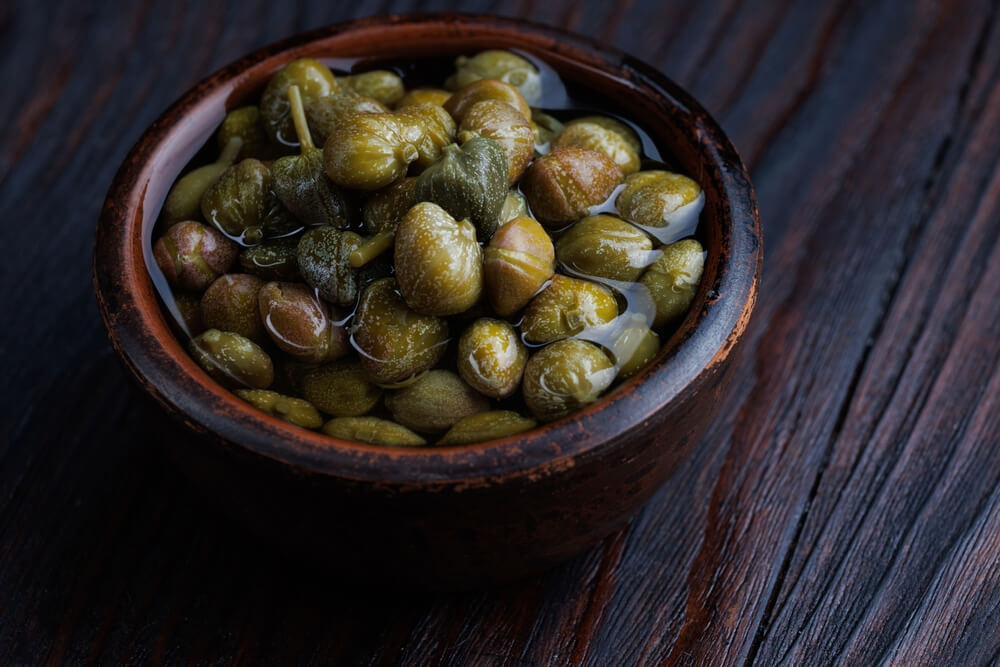What is Caper? Tips for Cooking with This Unique Ingredient

Capers, those tiny green buds often found in Mediterranean cuisine, are a culinary delight that add a unique burst of flavor to various dishes. But what exactly are capers? These small, pea-sized buds come from the caper bush, scientifically known as Capparis spinosa. They are harvested before the flowers bloom and then pickled in vinegar or brine to enhance their distinct taste.
The origin of capers can be traced back to the Mediterranean region, where they have been cultivated for thousands of years. Historical records suggest that they were used by ancient Greeks and Romans not only for their culinary value but also for medicinal purposes. The history of capers is rich and intertwined with the cultural practices of several civilizations around the Mediterranean basin.
As for what do capers taste like, these little buds offer a tangy, lemony flavor with a hint of floral sharpness. Their briny taste can elevate salads, pasta dishes, and sauces by adding complexity and depth. Whether sprinkled over smoked salmon or mixed into a tapenade, capers bring an unmistakable zest that intrigues the palate.
The Different Types of Capers and How They Are Prepared
Capers are a versatile ingredient that can add a burst of flavor to various dishes, but not all capers are created equal. Understanding the different types of capers and their preparation methods can enhance your culinary experience.
One of the most popular types is nonpareil capers, prized for their small size and delicate flavor. These tiny buds are often preferred by chefs for their subtle yet distinct taste, making them ideal for garnishing or incorporating into sauces.
When it comes to preservation, capers are typically found in two forms: salted and brined. Salted capers are packed in coarse salt, which helps preserve their natural flavors and provides a firmer texture. Before use, they should be rinsed thoroughly to remove excess saltiness. On the other hand, brined capers are stored in vinegar or saltwater solutions. This method gives them a tangy flavor profile that complements salads and pasta dishes.
The process of making capers begins with harvesting the immature flower buds from the Capparis spinosa plant. These buds are then dried briefly before being preserved either by salting or brining. The choice between these methods depends on the desired flavor intensity and texture for culinary applications.
Incorporating Capers into Your Dishes

Capers, those small, tangy buds you often find in Mediterranean dishes, are a versatile ingredient that can elevate your cooking with their unique flavor. Whether you’re a seasoned chef or an enthusiastic home cook, incorporating capers into your recipes can add a delightful burst of taste to your meals.
One popular way to use capers is in pasta dishes. A classic example is Pasta Puttanesca, where capers are combined with olives, tomatoes, garlic, and anchovies to create a savory sauce that perfectly complements al dente spaghetti. The briny notes of the capers bring depth and complexity to the dish.
For those who enjoy experimenting with different textures and flavors, cooking with caper berries offers another dimension. Caper berries are larger than regular capers and have a milder taste. They can be sliced and added to salads for an unexpected twist or used as a garnish for roasted meats and fish.
If you’re looking to infuse your meals with that distinctive caper flavor without overpowering other ingredients, try incorporating them into sauces or dressings. A simple lemon-caper sauce can transform grilled chicken or fish into something extraordinary by balancing acidity with saltiness.
Incorporating recipes with capers into your culinary repertoire not only diversifies your menu but also introduces new taste experiences. Whether you’re making a zesty tapenade or enhancing the flavor profile of a stew, these little buds offer endless possibilities for creative cooking adventures.
Nutritional Benefits and Health Considerations of Eating Capers
Capers, those tiny green buds often found in Mediterranean cuisine, pack a punch when it comes to nutritional benefits and health considerations. One of the primary health benefits of eating capers is their rich antioxidant content. These antioxidants help combat oxidative stress in the body, potentially reducing the risk of chronic diseases. Capers are also a good source of vitamins A and K, as well as flavonoids like rutin and quercetin, which contribute to their anti-inflammatory properties.
In terms of nutritional value, capers are an excellent example of pickled foods that offer more than just flavor. They are low in calories yet high in taste, making them an ideal choice for those looking to enhance their meals without adding extra calories. This makes them particularly appealing as low-calorie flavoring ingredients that can be incorporated into various dishes such as salads, sauces, and tapenades.
However, it’s important to consider the sodium content when consuming capers. Like many pickled foods, they can be high in salt due to the brining process used for preservation. For individuals monitoring their sodium intake for health reasons such as hypertension or heart disease, moderation is key when enjoying these flavorful buds.
Tips for Buying and Storing Capers to Maximize Freshness and Flavor
When it comes to enhancing your culinary creations, capers are a delightful addition that can elevate the flavor profile of many dishes. Whether you prefer fresh or jarred capers, knowing where to buy them and how to store them properly is key to maximizing their freshness and flavor.
To start, you can find fresh or jarred capers at most grocery stores, specialty food shops, or online retailers. When purchasing fresh capers, look for firm buds with a vibrant green color. For jarred varieties, ensure that the jars are sealed tightly and check the expiration date for optimal quality.
Once you’ve brought your capers home, proper storage is crucial. If you’re dealing with an opened jar of capers, make sure they are submerged in their brine solution before sealing the lid tightly. This helps maintain their freshness and prevents spoilage. Store the jar in the refrigerator where they can last for several months.
Understanding the shelf-life of preserved foods like capers is important as well. Unopened jars generally have a long shelf-life when stored in a cool, dark place such as a pantry. However, once opened and refrigerated properly, they should be consumed within six months to enjoy their peak flavor.
Enhancing Your Culinary Experience with the Unique Flavor of Capers
Capers, those small but mighty buds, have been enhancing culinary experiences for centuries with their distinctive flavor. Their tangy, salty taste adds a unique dimension to a variety of dishes, from classic Mediterranean recipes to modern fusion cuisine. By incorporating capers into your cooking repertoire, you can elevate the taste profile of your meals and surprise your palate with new and exciting flavors.
Whether sprinkled over a fresh salad or stirred into a rich pasta sauce, capers bring an unexpected burst of flavor that complements both simple and complex dishes. Their versatility makes them an excellent addition to any pantry. Moreover, capers pair well with ingredients like lemon, garlic, and olive oil, making them ideal for experimenting in the kitchen.
In conclusion, embracing capers in your cooking not only enhances the flavor of your dishes but also opens up new avenues for culinary creativity. So next time you’re looking to add a little something extra to your meal, consider reaching for these flavorful buds and discover how they can transform ordinary recipes into extraordinary dining experiences.

